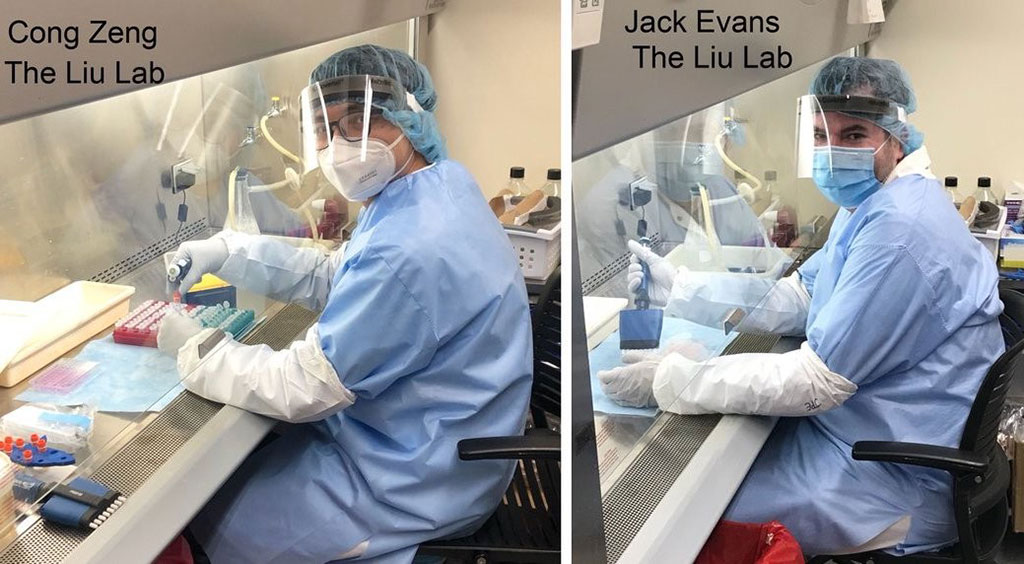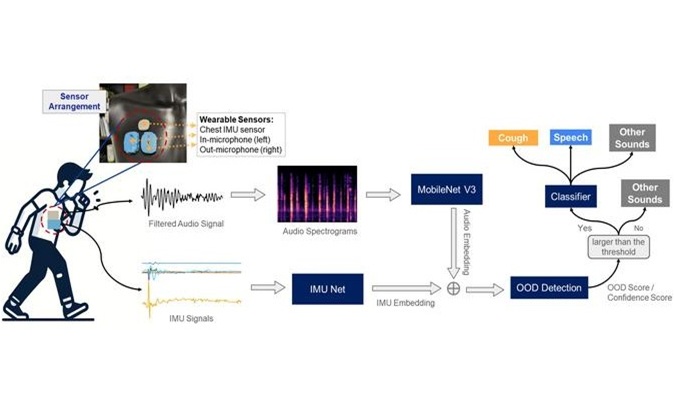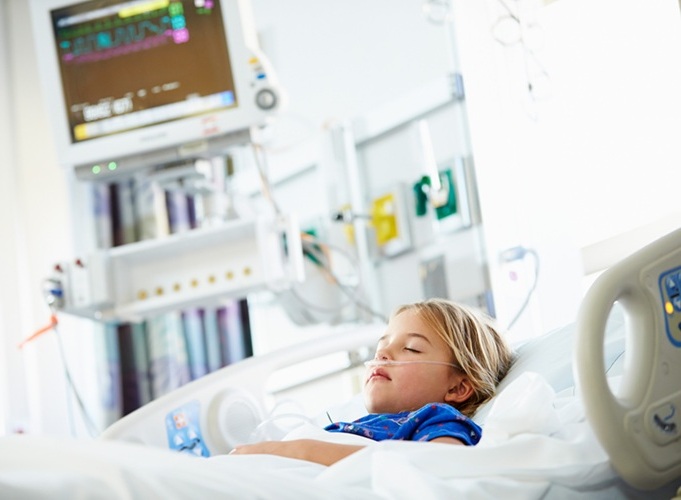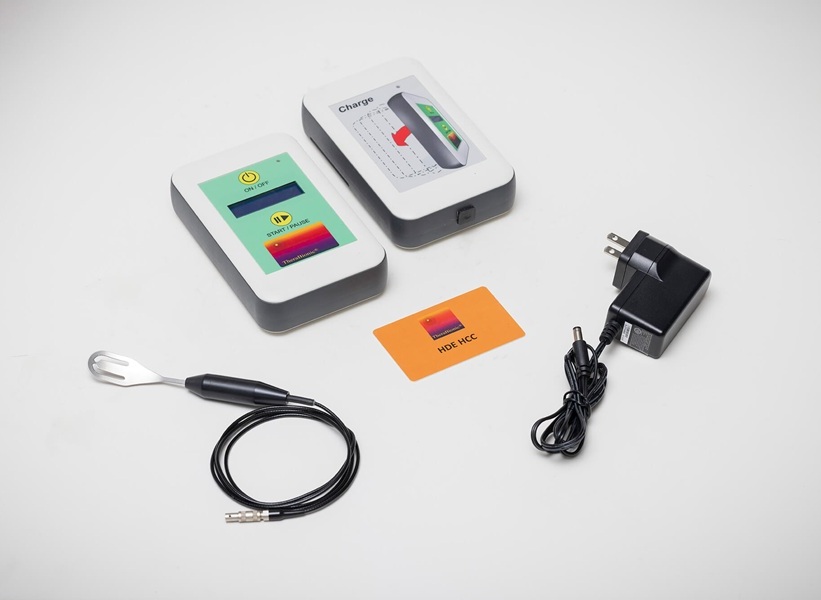New Lab Testing Procedure Specifically Identifies SARS-CoV-2 Neutralizing Antibodies
|
By HospiMedica International staff writers Posted on 20 Oct 2020 |

Image: Cong Zeng and Jack Evans were first authors of a paper describing a new assay that detects neutralizing antibodies against SARS-CoV-2 (Photo courtesy of Ohio State News)
Scientists have developed a new lab testing procedure for the detection of antibodies against SARS-CoV-2 that gives results more quickly than existing assays and specifically identifies so-called “neutralizing” antibodies - those that protect by blocking infection of cells.
Knowing that a person has developed antibodies against the SARS-CoV-2 virus after recovering from COVID-19 doesn’t tell everything about his/her immunity. The levels and even types of antibodies can differ among patients, and those differences can influence whether a person is protected against being reinfected. Scientists at The Ohio State University (Columbus, OH, USA) developed what is called a “pseudotype” virus neutralizing antibody assay, in which an HIV vector and core is coated with the SARS-CoV-2 spike protein to detect antibodies against the coronavirus. The team applied a new approach by selecting a different form of light-producing enzyme that can be detected conveniently in culture media containing the virus-infected cells. That choice saved several steps, and time, in the detection process without losing accuracy and sensitivity to the target virus.
The team analyzed 221 patient blood samples to validate the effectiveness of the assay and verify that the detection test could be scaled up for widespread screening. The results showed that, in general, hospitalized patients - and ICU patients in particular - had the highest concentrations, or titers, of neutralizing antibodies in their systems. However, over 14% of those who had been hospitalized had no or very low levels of antibodies. Among the health care professionals, 40% were negative for neutralizing antibodies and 36% had low concentrations. And more than half of the convalescent blood donors had concentrations of antibodies that were too low to qualify them as donors for treatment of COVID-19 patients. The assay detected no SARS-CoV-2 antibodies in the samples from people who had been sick with other types of respiratory diseases. The test accuracy was further validated by verifying in a lab setting that the antibodies detected in the COVID-19 patient blood samples did in fact neutralize the authentic SARS-CoV-2 virus. It won’t be long before the assay is put to a larger test.
“With many assays currently in use, we can detect antibodies, but that doesn’t tell us if they’re neutralizing antibodies. We only know the level of antibodies someone has,” said Shan-Lu Liu, professor in the Ohio State College of Veterinary Medicine’s Department of Veterinary Biosciences and the senior author of a new journal article describing the assay. “Some antibodies might be protective, some might not be protective, and some might even enhance infection – we know with this type of coronavirus and some other viruses, some antibodies can even do harm,” he said. “Our assay examines whether antibodies are potentially protective, which means they prevent a patient from reinfection and block viral replication. That’s the outcome of infection that we want people to have.”
Related Links:
The Ohio State University
Knowing that a person has developed antibodies against the SARS-CoV-2 virus after recovering from COVID-19 doesn’t tell everything about his/her immunity. The levels and even types of antibodies can differ among patients, and those differences can influence whether a person is protected against being reinfected. Scientists at The Ohio State University (Columbus, OH, USA) developed what is called a “pseudotype” virus neutralizing antibody assay, in which an HIV vector and core is coated with the SARS-CoV-2 spike protein to detect antibodies against the coronavirus. The team applied a new approach by selecting a different form of light-producing enzyme that can be detected conveniently in culture media containing the virus-infected cells. That choice saved several steps, and time, in the detection process without losing accuracy and sensitivity to the target virus.
The team analyzed 221 patient blood samples to validate the effectiveness of the assay and verify that the detection test could be scaled up for widespread screening. The results showed that, in general, hospitalized patients - and ICU patients in particular - had the highest concentrations, or titers, of neutralizing antibodies in their systems. However, over 14% of those who had been hospitalized had no or very low levels of antibodies. Among the health care professionals, 40% were negative for neutralizing antibodies and 36% had low concentrations. And more than half of the convalescent blood donors had concentrations of antibodies that were too low to qualify them as donors for treatment of COVID-19 patients. The assay detected no SARS-CoV-2 antibodies in the samples from people who had been sick with other types of respiratory diseases. The test accuracy was further validated by verifying in a lab setting that the antibodies detected in the COVID-19 patient blood samples did in fact neutralize the authentic SARS-CoV-2 virus. It won’t be long before the assay is put to a larger test.
“With many assays currently in use, we can detect antibodies, but that doesn’t tell us if they’re neutralizing antibodies. We only know the level of antibodies someone has,” said Shan-Lu Liu, professor in the Ohio State College of Veterinary Medicine’s Department of Veterinary Biosciences and the senior author of a new journal article describing the assay. “Some antibodies might be protective, some might not be protective, and some might even enhance infection – we know with this type of coronavirus and some other viruses, some antibodies can even do harm,” he said. “Our assay examines whether antibodies are potentially protective, which means they prevent a patient from reinfection and block viral replication. That’s the outcome of infection that we want people to have.”
Related Links:
The Ohio State University
Latest COVID-19 News
- Low-Cost System Detects SARS-CoV-2 Virus in Hospital Air Using High-Tech Bubbles
- World's First Inhalable COVID-19 Vaccine Approved in China
- COVID-19 Vaccine Patch Fights SARS-CoV-2 Variants Better than Needles
- Blood Viscosity Testing Can Predict Risk of Death in Hospitalized COVID-19 Patients
- ‘Covid Computer’ Uses AI to Detect COVID-19 from Chest CT Scans
- MRI Lung-Imaging Technique Shows Cause of Long-COVID Symptoms
- Chest CT Scans of COVID-19 Patients Could Help Distinguish Between SARS-CoV-2 Variants
- Specialized MRI Detects Lung Abnormalities in Non-Hospitalized Long COVID Patients
- AI Algorithm Identifies Hospitalized Patients at Highest Risk of Dying From COVID-19
- Sweat Sensor Detects Key Biomarkers That Provide Early Warning of COVID-19 and Flu
- Study Assesses Impact of COVID-19 on Ventilation/Perfusion Scintigraphy
- CT Imaging Study Finds Vaccination Reduces Risk of COVID-19 Associated Pulmonary Embolism
- Third Day in Hospital a ‘Tipping Point’ in Severity of COVID-19 Pneumonia
- Longer Interval Between COVID-19 Vaccines Generates Up to Nine Times as Many Antibodies
- AI Model for Monitoring COVID-19 Predicts Mortality Within First 30 Days of Admission
- AI Predicts COVID Prognosis at Near-Expert Level Based Off CT Scans
Channels
Critical Care
view channel
Origami Robots to Deliver Medicine Less Invasively and More Effectively
Delivering medicine to ulcers or other internal sites often requires invasive procedures that can disrupt surrounding tissues and lengthen recovery times. Traditional magnetic actuators used in soft robotics... Read more
Improved Cough-Detection Technology Aids Health Monitoring
Coughing serves as an important biomarker for tracking a variety of conditions and can help monitor the progress of respiratory diseases or predict when someone’s asthma is being exacerbated.... Read moreSurgical Techniques
view channel
Novel Glue Prevents Complications After Breast Cancer Surgery
Seroma and prolonged lymphorrhea are among the most common complications following axillary lymphadenectomy in breast cancer patients. These postoperative issues can delay recovery and postpone the start... Read more
Breakthrough Brain Implant Enables Safer and More Precise Drug Delivery
Delivering medication directly to specific regions of the brain has long been a major challenge in treating neurological disorders. Current implants and infusion systems typically reach only one or two... Read morePatient Care
view channel
Revolutionary Automatic IV-Line Flushing Device to Enhance Infusion Care
More than 80% of in-hospital patients receive intravenous (IV) therapy. Every dose of IV medicine delivered in a small volume (<250 mL) infusion bag should be followed by subsequent flushing to ensure... Read more
VR Training Tool Combats Contamination of Portable Medical Equipment
Healthcare-associated infections (HAIs) impact one in every 31 patients, cause nearly 100,000 deaths each year, and cost USD 28.4 billion in direct medical expenses. Notably, up to 75% of these infections... Read more
Portable Biosensor Platform to Reduce Hospital-Acquired Infections
Approximately 4 million patients in the European Union acquire healthcare-associated infections (HAIs) or nosocomial infections each year, with around 37,000 deaths directly resulting from these infections,... Read moreFirst-Of-Its-Kind Portable Germicidal Light Technology Disinfects High-Touch Clinical Surfaces in Seconds
Reducing healthcare-acquired infections (HAIs) remains a pressing issue within global healthcare systems. In the United States alone, 1.7 million patients contract HAIs annually, leading to approximately... Read moreHealth IT
view channel
Printable Molecule-Selective Nanoparticles Enable Mass Production of Wearable Biosensors
The future of medicine is likely to focus on the personalization of healthcare—understanding exactly what an individual requires and delivering the appropriate combination of nutrients, metabolites, and... Read moreBusiness
view channel
Philips and Masimo Partner to Advance Patient Monitoring Measurement Technologies
Royal Philips (Amsterdam, Netherlands) and Masimo (Irvine, California, USA) have renewed their multi-year strategic collaboration, combining Philips’ expertise in patient monitoring with Masimo’s noninvasive... Read more
B. Braun Acquires Digital Microsurgery Company True Digital Surgery
The high-end microsurgery market in neurosurgery, spine, and ENT is undergoing a significant transformation. Traditional analog microscopes are giving way to digital exoscopes, which provide improved visualization,... Read more
CMEF 2025 to Promote Holistic and High-Quality Development of Medical and Health Industry
The 92nd China International Medical Equipment Fair (CMEF 2025) Autumn Exhibition is scheduled to be held from September 26 to 29 at the China Import and Export Fair Complex (Canton Fair Complex) in Guangzhou.... Read more

















